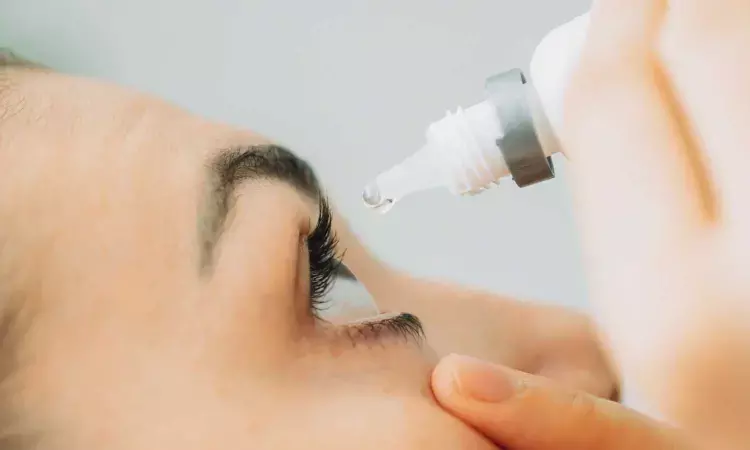- Home
- Medical news & Guidelines
- Anesthesiology
- Cardiology and CTVS
- Critical Care
- Dentistry
- Dermatology
- Diabetes and Endocrinology
- ENT
- Gastroenterology
- Medicine
- Nephrology
- Neurology
- Obstretics-Gynaecology
- Oncology
- Ophthalmology
- Orthopaedics
- Pediatrics-Neonatology
- Psychiatry
- Pulmonology
- Radiology
- Surgery
- Urology
- Laboratory Medicine
- Diet
- Nursing
- Paramedical
- Physiotherapy
- Health news
- Fact Check
- Bone Health Fact Check
- Brain Health Fact Check
- Cancer Related Fact Check
- Child Care Fact Check
- Dental and oral health fact check
- Diabetes and metabolic health fact check
- Diet and Nutrition Fact Check
- Eye and ENT Care Fact Check
- Fitness fact check
- Gut health fact check
- Heart health fact check
- Kidney health fact check
- Medical education fact check
- Men's health fact check
- Respiratory fact check
- Skin and hair care fact check
- Vaccine and Immunization fact check
- Women's health fact check
- AYUSH
- State News
- Andaman and Nicobar Islands
- Andhra Pradesh
- Arunachal Pradesh
- Assam
- Bihar
- Chandigarh
- Chattisgarh
- Dadra and Nagar Haveli
- Daman and Diu
- Delhi
- Goa
- Gujarat
- Haryana
- Himachal Pradesh
- Jammu & Kashmir
- Jharkhand
- Karnataka
- Kerala
- Ladakh
- Lakshadweep
- Madhya Pradesh
- Maharashtra
- Manipur
- Meghalaya
- Mizoram
- Nagaland
- Odisha
- Puducherry
- Punjab
- Rajasthan
- Sikkim
- Tamil Nadu
- Telangana
- Tripura
- Uttar Pradesh
- Uttrakhand
- West Bengal
- Medical Education
- Industry
Automated pupillometry may improve prognostication of Acute Brain Injury

Traditionally, clinicians have relied on subjective interpretation of pupillary light reactivity using handheld light sources. However, a recent study published in Lancet Neurology suggests that automated pupillometry, through a quantitative metric known as the Neurological Pupil index (NPi), might revolutionize this approach, offering more precision and reproducibility in assessing patients with severe non-anoxic acute brain injury.
This significant advancement comes from the ORANGE study, a multicenter, prospective, observational cohort conducted across 13 hospitals in Europe and North America. The study focused on patients admitted to the intensive care unit with traumatic brain injury, aneurysmal subarachnoid hemorrhage, or intracerebral hemorrhage.
The NPi was computed through automated infrared pupillometry assessments performed every 4 hours during the first 7 days after admission, resulting in values ranging from 0 to 5, with abnormal NPi defined as <3. The co-primary outcomes of the study were neurological outcomes (measured by the extended Glasgow Outcome Scale [GOSE]) and mortality at 6 months.
Between November 1, 2020, and May 3, 2022, the study enrolled 514 patients with diverse acute brain injuries. The median age was 61 years, and the median Glasgow Coma Scale score upon admission was 8. A staggering 40,071 NPi measurements were recorded, averaging 40 measurements per patient.
The results were compelling. Out of the 497 patients assessed at the 6-month mark, 32% had unfortunately passed away. Moreover, 47% of the patients exhibited at least one instance of abnormal NPi. This abnormal NPi was significantly associated with both poor neurological outcomes and in-hospital mortality.
For every 10% increase in the frequency of abnormal NPi, the adjusted odds ratio for a poor neurological outcome was 1.42. Similarly, abnormal NPi was associated with a substantial increase in in-hospital mortality, with an adjusted hazard ratio of 5.58.
The implications of this study are profound. The NPi, derived from automated pupillometry, emerges as a clinically and statistically significant prognostic tool for assessing neurological outcomes and mortality in acute brain injury cases. Its simplicity, automation, and repeatability open the door for continuous monitoring of disease progression, improving the accuracy of outcome predictions at the bedside.
Reference:
Oddo, M., Taccone, F. S., Petrosino, M., Badenes, R., Blandino-Ortiz, A., Bouzat, P., Caricato, A., Chesnut, R. M., Ben-Hamouda, N., Hemphill, J. C., Koehn, J., Citerio, G., … Wang, R. (2023). The Neurological Pupil index for outcome prognostication in people with acute brain injury (ORANGE): a prospective, observational, multicentre cohort study. In The Lancet Neurology. Elsevier BV. https://doi.org/10.1016/s1474-4422(23)00271-5
Neuroscience Masters graduate
Jacinthlyn Sylvia, a Neuroscience Master's graduate from Chennai has worked extensively in deciphering the neurobiology of cognition and motor control in aging. She also has spread-out exposure to Neurosurgery from her Bachelor’s. She is currently involved in active Neuro-Oncology research. She is an upcoming neuroscientist with a fiery passion for writing. Her news cover at Medical Dialogues feature recent discoveries and updates from the healthcare and biomedical research fields. She can be reached at editorial@medicaldialogues.in
Dr Kamal Kant Kohli-MBBS, DTCD- a chest specialist with more than 30 years of practice and a flair for writing clinical articles, Dr Kamal Kant Kohli joined Medical Dialogues as a Chief Editor of Medical News. Besides writing articles, as an editor, he proofreads and verifies all the medical content published on Medical Dialogues including those coming from journals, studies,medical conferences,guidelines etc. Email: drkohli@medicaldialogues.in. Contact no. 011-43720751


